On Monday, February 27, the Truth and Reconciliation Commission (CVR) officially launched the exhumation of buried bones in mass graves in Mwaro central province. Some people say this is not the right moment to carry out such an activity!
Directed by Rénovat Ndabashinze & Agnès Ndirubusa, translated by Pierre Emmanuel Ngendakumana
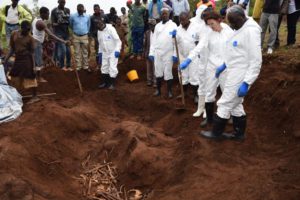
In the presence of children, the exhumation stage of the remains of the mass graves officially began on Monday, February 27, in Rusaka.
Gasenyi hill of Makamba area in Rusaka commune of Mwaro province has been chosen as a pilot site for this important stage of the work of the Truth and Reconciliation Commission (CVR).
Eight experts, including Dr Tania Delabarde, specialized in the management of mass graves, were deployed for three days. The nationals came from the management group of mortal remains of the National Platform of the civil protection. Early on, they were on site with their gear: overalls, , goggles, safety shoes, gloves, helmets, shovels, tents, triangular and plaster trowels, brushes, buckets, etc.
A security cordon is built around the mass grave already identified. This did not prevent the inhabitants from flooding in to see with their eyes this macabre discovery. Children, women and men remained confined all morning. This did not facilitate the task of the experts.
The administration had mobilized a group of men, with hoes to dig. Despite the order of the experts asking the population to leave, they did not comply.
Around 9:30 am, the work finally began after a speech by Mrs. Clotilde Niragira, Executive Secretary of CVR: “We are here to proceed with the official launch of the excavation of human remains.” She announced that after Mwaro, activities will continue with other mass graves scattered across the country.
Muramvya, Mwaro and Rumonge were selected as pilot provinces for the identification of mass graves and the collection of depositions, the identification of rescuers, witnesses, missing people and those who lost their possessions.
Mrs. Niragira said a decent funeral will be organized after the exhumation.
Léonce Kwizera, Senior Advisor to the governor of Mwaro, thanked the people for remaining united and supportive despite this macabre discovery. He believes that the Truth and Reconciliation Commission will discover the truth about the circumstances, the perpetrators and the reasons for the massacres.
Horrible discoveries
In addition to the remains already assembled, skulls, foot bones, etc., worn clothes were laid bare. In the presence of members of CVR, residents including children, representatives of the civil society, etc., some mothers were not able to hold back their tears. The desolation was read on their faces. There were crushes and whispers could be heard from people who came to follow closely this macabre activity. Finally, the head of the experts decided that only journalists, members of CVR and a few men to dig could stay. Onlookers were ordered to go away.
As a reminder, in mid-January 2017, human remains had been dug up in this locality by workers who were digging the land for the construction of a technical school. The Administration and the Truth and Reconciliation Commission (CVR) decided to suspend that activity.
There are at least five mass graves in Rusaka commune alone.
People let off steam
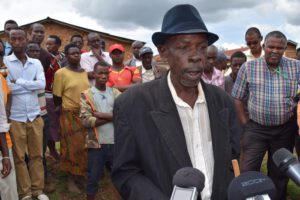
Emmanuel Ntacobakimvuna says 15 people were killed on Nyamigogo sub-hill
Unlike on other occasions, there is a crush around journalists. A lot of people wanted to talk. Some had walked many miles to be there. For example, one man said he came from Saswe hill of Kayokwe commune. Another woman said she came from Muyebe hill. The names of the disappeared, some of the executioners, remained indelible: “On our Nyamigogo sub-hill, fifteen people were killed,” recalls Emmanuel Ntacobakimvuna, septuagenarian. He cited their names as if it happened yesterday: “They took Ntirwinyegeza, Roger, Birihanyuma, Louis, Nzirubusa, Rutega and Harushukuri, etc.” Everyone, including his father, were said to have been taken to Makamba by a policeman named Yakobo and a local chief.
In a sorrowful voice, he confides that they were thrown into a mass grave: “This is where the sand was extracted for the construction of the office of Uprona party. We did not know it was going to swallow up our parents and brothers, “he says.
In memory of Melchior Ndayisenga, the last words of his father always ring in his ears: “My son, we shall see each other again in heaven.” Miraculously, he was able to escape: “The executioners demanded that I leave with them, and I swerved suddenly behind the house and cut and ran.”
For Léonidas Sinzinkayo, 54, from Nyamugari hill, all these tragedies are a reflection of a bad regime. Not to be confused with ethnicity. For, he explains, there are good and bad Tutsis. “Same for the Hutu,” he adds, while indexing the members of the Revolutionary Youth Rwagasore (JRR) to have been very active in these massacres. He said: “Evil does not pay. Most of these executioners died while others are only struggling to survive or only exist by name.”
The victims appreciate the work of this commission and feel relieved.
“The exhumation of the remains of our people shows us that ,in the end, they understood the human value. Even if we bury them in one place, but decently, it will comfort us, “says Sinzinkayo. They hope that this commission will allow them to recover the looted property such as cows, goats and land.
Her eyes flooded with tears after seeing three sacked up skulls, Capitoline Nahimana, 54, an orphan says true forgiveness is granted after the truth is found out. This orphan of 1972 is already asking CVR to set up a compensation program.
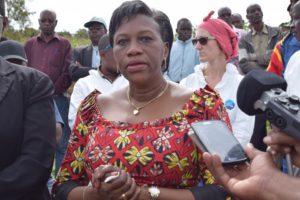
According to Mrs. Clotilde Niragira, after the exhumation, a decent funeral will be organized.
About this, Mrs. Clotilde Niragira said there is the restoration of the dignity of the victims in their missions. This involves creating a framework of expression for them, listening to them and then recognizing them. According to her, CVR will propose a reparation program to the government in the future. “This may be individual, collective and symbolic,” says Niragira.
Risks of self accusation and new trauma
A certain fear could also be seen on the faces of some local residents. While some were jostling to testify, obviously, others seemed upset. “What do you want me to say?” “A man, an octogenarian, said before he confided that he was afraid to speak. And when the interviewees said it was a good thing to exhume these remains, murmurs were heard in the crowd: “Huuuuuuuu,” suggests an old mama, before going away.
An exhumation likely to divide
“In principle, when one wants to exhume the bones, they must clear the area and all those who have access to it must be identified,” said Aloys Batungwanayo of the Association for the Memory and Protection of Humanity against International Crimes (Amepci Gira Ubuntu). He also said psychologists and sociologists must be present to help people in the management of trauma.
In Rusaka, the observation is that some people were watching from afar. “Everyone says these are people of one ethnic group killed and thrown into these mass graves. According to what investigation? “Laments a young graduate of the locality. “Isn’t this going to divide people?” “He says. For him, it would be better to protect those mass graves and dig them up at the right time.
“In any case, when your father or grandfather is publicly quoted as a killer, it’s hard to feel safe,” he says while watching around, before quickly kick-starting his motorcycle.
An old man who was coming from his farm pleaded for just and objective investigations to avoid false accusations. A certain woman said the exhumation activities, without people’s sensitization, are likely to divide people and cause trauma.
A survey carried out by the Association for the Remembrance and Protection of Humanity against International Crimes (Amepci Gira Ubuntu) speaks of 2,500 identified mass graves between 1962 and 2016. Furthermore, the University of Burundi, in collaboration with the Center for Alert and Conflict Prevention (Cenap), indicates that for 1972, 139 mass graves have been listed in the seven former provinces.
For 1988, 34 were recorded in the two communes of Ntega and Marangara.
Reactions
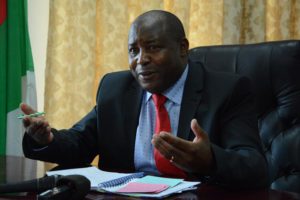 “We must face the truth”
“We must face the truth”
Evariste Ndayishimiye, Secretary General of CNDD-FDD party, wonders why arguing about the appropriateness of the CVR’s action. The Arusha Agreement ruled on its establishment in 2005. He said: “At some point, one must stop looking for pretexts and face the truth. We owe it to victims who have been waiting for a long time. ”
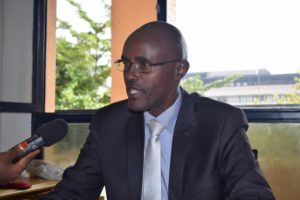 “Recovery”
“Recovery”
Tatien Sibomana of Uprona party not officially recognized by the Government regrets that this stage begins when the government does not inspire confidence in all Burundians. The killings were ethnic. He feared that the regime would change the identity of the content of these mass graves. For him, it would be better to await the end of the current crisis so that there is a neutral government capable of doing this work impartially.
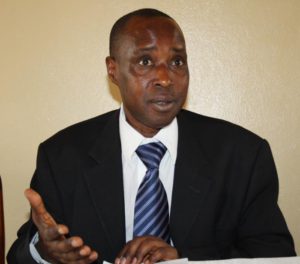 “Counter-productive “
“Counter-productive “
“What CVR is doing is irrelevant, counterproductive,” says Léonce Ngendakumana, President of the political coalition ADC-Ikibiri. The goal of the search for mass graves is the discovery of the truth.
He says this step should be planned, programmed and explained to the population to avoid trauma. “It is simply the propaganda by the ruling party aimed at the manipulation of the Hutu ethnic group people. It is not by awakening resentment that they are going to save us.” For him, some people risk being blamed unjustly.
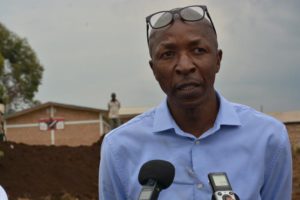 “It is more than ever the moment”
“It is more than ever the moment”
“Do we have to wait until everyone else of the time disappears with the truth about what happened? “Asks Aloys Batungwanayo of the AMEPCI Gira Ubuntu. It is not known when the country is going to be 100% safe, which means that, as he says, it will never be the best time. He concluded that it is more than ever the moment.
 “It is not the right moment “
“It is not the right moment “
For Vital Nshimirimana, former representative of the Forum for the Strengthening of Civil Society (FORSC), this is not the time to do this work, given the crisis in the country. He recalled that at present, NGOs and the population are alerting to the existence of new mass graves. He also does not understand why Burundi government refuses to allow UN experts to investigate this matter while CVR rushes to exhume the bones of 1972.
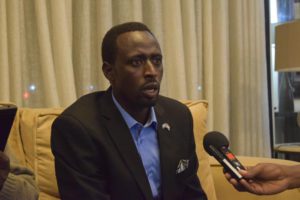 “Inopportune”
“Inopportune”
For Dieudonné Bashirahishize, it is not the right moment: “We must wait for fair justice and a Truth and Reconciliation Commission (TRC) which is impartial and worthy of the name.” According to him, this operation is remotely controlled by the regime. He, thus, advises this commission to be objective and cease being manipulated.
“Talking about reconciliation at the time the crimes are going on is a sad comedy,” he concludes.
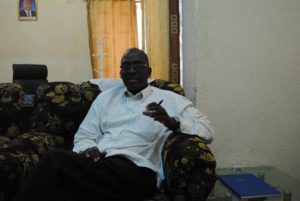 “Better late than never “
“Better late than never “
“The ideal moment would have been right after the events. As this has not been possible, it is better late than never, “said Pierre Claver Kazihise, President of Civil Society Citizenship. According to him, Burundi has spent more than 50 years of crimes perpetrated in impunity. For Kazihise, the cyclical crises in Burundi are the consequences of this absence of memory work. “If we had done that, perhaps we could have avoided some crises; unless we want to remain in ignorance and impunity.”
Box
A common grave: Clarification
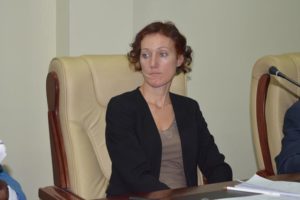 According to Dr Tania Delabarde, it is a pit, a trench in which a very large number of people have been buried. This can be related to a situation of natural disaster and epidemic. In the case of armed conflicts, wars, it represents the place where the victims of the abuses are buried. The mass graves represent a challenge for the authorities of the country because they are de facto essential witnesses of these events.
According to Dr Tania Delabarde, it is a pit, a trench in which a very large number of people have been buried. This can be related to a situation of natural disaster and epidemic. In the case of armed conflicts, wars, it represents the place where the victims of the abuses are buried. The mass graves represent a challenge for the authorities of the country because they are de facto essential witnesses of these events.
They present the bodies of victims buried outside beliefs and funerary ceremonies. For the families of the victims, they constitute an additional trauma since their relatives have not been buried in a proper way, respecting the beliefs and different funerary ceremonies.
In a context of armed conflicts, they are used to hide the abuses of human rights violations. They must be documented, localized and protected.
Caption: Dr TaniaDelabarde
Analysis
The polemic is on the work of CVR, especially on the exhumation of the bones. Some believe that the politico-security context is not conducive enough for the operation to be carried out. Others say despite everything, “there must be a move forward as the wait has been too long. “Both sides are all right,” say experts on transitional justice mechanisms.
The procedure requires the protection of victims, witnesses and even executioners. According to them, witnesses must have confidence in institutions that are broadly neutral. They need protection from potential aggressors. Now, with the present state of affairs, this commission risks performing unilateral work and receiving only those who feel much more concerned about the present moment.
The question would then be whether we should wait for a more relaxed atmosphere. The solution would not be to fold arms. “The wait risk being long, the victims of 1972 can testify.”
CVR must work to differentiate itself from the other Truth and Reconciliation Commissions. It will be a matter of making the law flexible for the benefit of reconciliation.
To this end, an expert proposes to start with debates across the country, in the style of the National Inter-Burundian Dialogue Commission. But in the committees of concerned people and around a specific issue, that of memory work. This will allow the two camps, which diverge on the issue, to find a compromise and ease the tension.

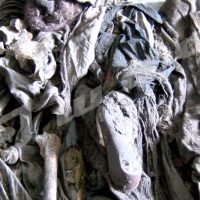
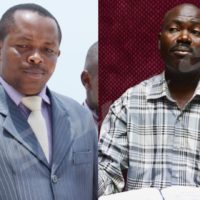
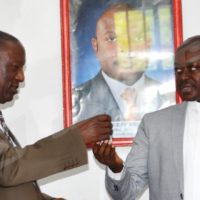
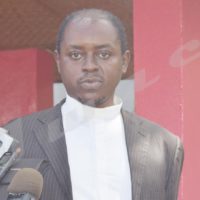
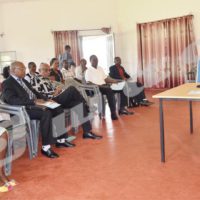













 IWACU Open Data
IWACU Open Data

